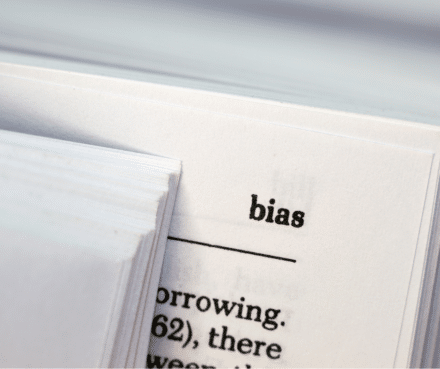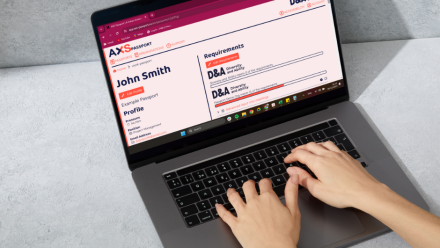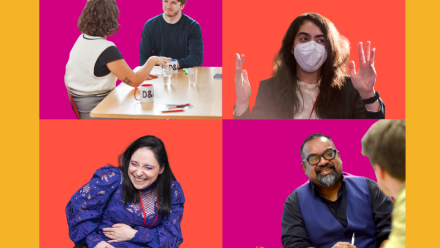How to authentically address ‘unconscious bias’ in the workplace
8th January 2024 by Ellie Thompson

With 81% of organisations offering unconscious bias training to their employees, you’d expect implicit bias in the workplace to be a thing of the past. And yet, we still see bias and discrimination running rampant in workplaces, holding us back from the inclusive working cultures we all want to see. So, what’s missing? Why isn’t it working?
We’ll show you why unconscious bias training doesn’t, and can’t, foster inclusion, and dive into how you can work to create a truly equitable environment, starting today.
Recognise that much of our unconscious bias isn’t unconscious at all
Let’s debunk the myth of unconscious bias.
Unconscious bias training doesn’t work to make organisations more inclusive because so much of our bias in the workplace is rooted in conscious awareness.
“You can’t train the bias out of anyone. [Unconscious bias training] is a design fault; it wasn’t born to make organisations more equal, it was to make them avoid litigation,” Says Hannah Litt, Head of Equity, Diversity, Inclusion and Antiracism at Mindweaver. Hannah stresses that talking about unconscious bias affects workplaces negatively, if at all: “People will just say… it’s okay, I can carry on behaving the way I behave because it’s unconscious and everybody’s got it, so I’m going to carry on causing harm.”
Bias affects every aspect of our workplace actions, behaviours and language. It can’t be addressed through one workshop; it needs to be continuous, concerted efforts, says Vic Mazonas (General Manager of GAIN, Group for Autism, Insurance, Investment and Neurodiversity):
Embed intersectionality in your approach to addressing bias in the workplace
The antidote to ‘check-box’ diversity and inclusion is intersectionality; recognising that different aspects of our identity intersect to influence the barriers and bias we each face as individuals.
To learn more about Kimberlé Crenshaw’s concept of intersectionality and its origins as a term to describe how the biases faced by black women were “greater than the sum of racism and sexism”, in our blog post: What is intersectionality and why does it matter in the workplace?
Taking an intersectional approach means taking intentional action to dismantle the attitudinal and physical barriers that prevent so many people from being able to equitably access and participate in the workplace. When you listen to the lived experiences that already exist within your teams, you’ll foster a working space in which more and more of your employees feel able to share their own diverse experiences, creating a ‘virtuous cycle’ of open communication, barrier-reduction, and, eventually, inclusive culture.
Don’t get disability awareness training; get disability inclusion training
As a disability-led organisation, we often get asked to deliver disability awareness training. But awareness training alone doesn’t work:
- It serves to ‘other’ and segment your disabled colleagues and employees
- It focuses on ‘what to do with disabled employees’, rather than the inclusive practices that make workplaces better for everyone
- ‘Awareness’ isn’t enough; we need action
Let’s shift the focus to disability inclusion. This means working on creating spaces that actively welcome and include disabled people, fostering cultures in which everyone can thrive. When you integrate inclusion and accessibility in the very fabric of your workplace, from the hiring process through to everyday colleague interactions, you remove the barriers that actually stand in the way of organisation-wide inclusion, wellbeing, and success.
Addressing bias requires more than a tap on the unconscious. It necessitates a conscious reckoning with our choices, a deliberate and continuous effort to diversify our perspectives, and a commitment to building an inclusive environment where everyone thrives. Moving beyond unconscious bias and working for collective liberation and social justice is the way to create a truly equitable workplace.
If you’re ready to start tackling the conscious and unconscious biases that permeate your organisation, find the right inclusion training for you.
Watch the series this blog was created from – ‘Labels and Legacies: Embracing Intersectionality with Atif– on-demand on our YouTube and keep an eye on our events page for more D&A panels, presentations and webinars.

Author’s Bio
Ellie is Communications Lead at Diversity and Ability where she crafts and manages all communications, advocating for accessible and inclusive messaging. Ellie’s perspective as a disabled, neurodiverse, queer woman ensures her work is informed by personal experiences navigating disabling barriers in education and the workplace. Ellie is a prolific contributor to journals and global online publications, sharing valuable insights on inclusive communication. She has also hosted and facilitated panel discussions at prominent inclusion events, including D&A’s inaugural conference and discussions at the House of Commons.
Beyond her professional achievements, Ellie’s heart belongs to Brighton, her hometown, where she completed an MSc in Experimental Psychology at the University of Sussex. She loves to spend her free time running on Brighton seafront, exploring the local charity shops, and hunting for the best local pub quiz.


